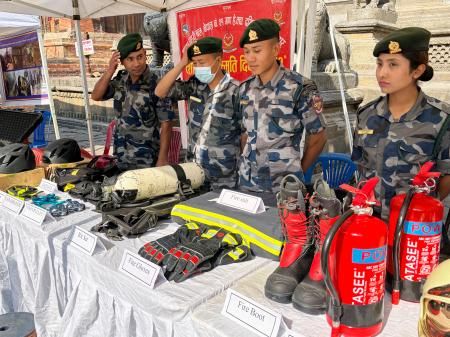Nepal Earthquake: Rebuilding and Resilience – A Decade of Progress and Ongoing Challenges
The devastating 2015 Nepal earthquake, measuring 7.8 on the Richter scale, left an indelible mark on the nation. More than 8,000 lives were lost, and countless others were displaced. A decade later, Nepal continues its journey of rebuilding and demonstrating remarkable resilience in the face of immense adversity. This article explores the progress made, the challenges that persist, and the ongoing efforts to ensure a more earthquake-resilient future.
Rebuilding Infrastructure: A Slow but Steady Process
The earthquake inflicted widespread damage on Nepal's infrastructure, including homes, schools, hospitals, and vital transportation networks. The initial response was swift, with international aid pouring in, but the scale of the destruction presented a monumental task.
Key Achievements:
- Reconstruction of homes: Significant progress has been made in reconstructing private homes, with many families relocating to safer, more resilient structures. The government's housing reconstruction program, though initially hampered by bureaucratic hurdles, has gained momentum.
- Improved building codes: Nepal has implemented stricter building codes, incorporating earthquake-resistant design principles to minimize future damage. This is a crucial step towards long-term resilience.
- Reinforcement of critical infrastructure: Efforts to rebuild and reinforce hospitals, schools, and other essential infrastructure are ongoing. While progress has been made, complete rehabilitation remains a long-term goal.
- Road and transportation improvements: Damaged roads and transportation networks have been largely repaired, improving connectivity and access to remote areas.
Remaining Challenges:
- Funding gaps: Despite substantial international aid, significant funding gaps remain, hindering the pace of reconstruction in certain areas.
- Access to remote regions: Reaching remote and mountainous communities continues to pose logistical challenges, impacting the delivery of aid and reconstruction efforts.
- Enforcement of building codes: Ensuring consistent and effective enforcement of the new building codes remains a critical challenge, especially in rural areas.
- Economic recovery: The earthquake severely impacted Nepal's economy, and full economic recovery is still underway, affecting the availability of resources for reconstruction.
Resilience and Community Development
Beyond physical infrastructure, rebuilding Nepal's social fabric has been equally crucial. The earthquake highlighted the importance of community resilience and the need for holistic development strategies.
Focus on Community Engagement:
- Disaster preparedness training: Extensive training programs have been implemented to educate communities on disaster preparedness and response techniques.
- Community-based reconstruction: Empowering local communities to participate in the reconstruction process has been a key strategy, fostering ownership and sustainability.
- Psychological support: Addressing the long-term psychological impact of the earthquake on survivors has been vital, with various organizations providing counseling and mental health services.
- Promoting sustainable livelihoods: Supporting the economic recovery of affected communities through initiatives promoting sustainable livelihoods is essential for long-term resilience.
Looking Ahead: A Future-Proof Nepal
The journey of rebuilding Nepal after the 2015 earthquake is a testament to the nation's resilience and the global community's support. While significant progress has been made, challenges remain. Continued investment in infrastructure, community development, and disaster preparedness is crucial to ensure a more resilient and prosperous future for Nepal. Further research into earthquake-resistant technologies and sustainable building practices is vital to mitigating the impact of future seismic events.
Call to Action: Learn more about organizations supporting Nepal's reconstruction efforts and consider contributing to their initiatives. You can make a difference in helping Nepal build back stronger. [Link to relevant NGO websites].
